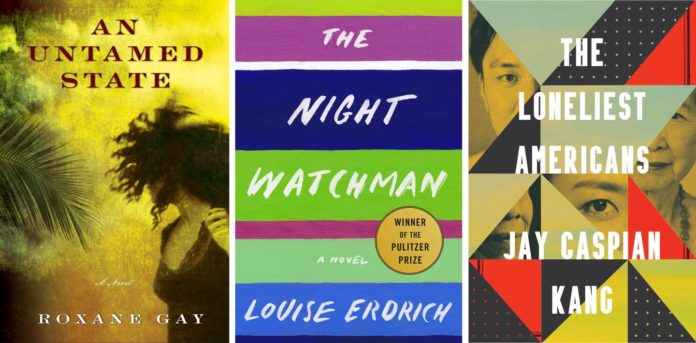When it comes to publishing minority voices and perspectives, there’s no doubt that we’ve come a long way as a society.
One point we can mark our progress from is the publication of “The Education of Little Tree” by Forrest Carter, originally released in 1976, and then a surprise bestseller in 1991 upon its rerelease by the University of New Mexico Press. It was even the first winner of the American Booksellers Association Book of the Year award.
Advertisement
Written as a kind of fictionalized memoir of Carter’s life as a boy living with his Cherokee grandparents in the 1920s, the novel was praised as an authentic and charming rendering of Native American life, a kind of go-to for those who wanted to check a box on reading a book about indigenous peoples.
While the book alleged that Carter had Cherokee ancestry — a claim that may or may not be true — it is a stone-cold fact that Forrest Carter is a pseudonym for Asa Earl Carter, a member of the Ku Klux Klan who ran for governor of Alabama on an explicitly white supremacist platform in 1970.
Advertisement
There is a declining acceptance of books about minority cultures written by people who do not make the effort to understand or accurately represent those cultures. An avowed white supremacist writing about Indigenous peoples is unlikely to fly these days.
:quality(70)/cloudfront-us-east-1.images.arcpublishing.com/tronc/XMCW7PDKCJBKPEHRVLKLHNLTKU.jpg)
Louise Erdrich won a Pulitzer for writing as an Indigenous person about Indigenous people. Stephen Graham Jones weaves Native American culture into the slasher genre in “My Heart Is a Chainsaw” showing that minority perspectives can be part of the flavoring of the story rather than having to carry the full weight of representation.
Sure, there’ve been some setbacks. James Patterson’s recent comment that white authors were somehow subject to reverse racism and denied job opportunities was forehead-slapping silly, as Patterson later admitted in an apology.
And in Florida, following the passage of the “Don’t Say Gay” law, schools and libraries have been preemptively pulling books with gay, lesbian and bisexual characters from the shelves, suggesting that there are at least some Americans who would like to reverse our progress on representation.
My hope is that these are just the final spasms of the narrow-minded and afraid.
Because these conversations often come up in the context of a commercial marketplace, we assume that we’re in the midst of a zero-sum game, where publishing more voices must crowd out the minority, but diversity of expression isn’t the goal for the sake of diversity itself, because greater diversity expands the range and supply of excellence available to readers.
In the words of George W. Bush’s famous malaprop, increased diversity will help “make the pie higher.”
It is worth asking that if this is progress, how will we know when we’ve reached the goal? For that, I recommend a recent conversation between Jay Caspian Kang (“The Loneliest Americans”) and Roxane Gay (“An Untamed State”) on Jane Coaston’s podcast, “The Argument.”
Advertisement
After a wide-ranging discussion about representation, race and gender, the panelists agreed that what they want as writers from minority backgrounds is simply what any writer wants, not to be judged according to how they represent their particular identity groups, but to have their work evaluated on its own terms.
This means both taking diversity more seriously in practice, filling the cultural space with books, while making it less central to how we discuss the works published by diverse authors.
A good story is a good story, and we’ve been missing out on lots of good stories. Let’s not do that anymore.
John Warner is the author of “Why They Can’t Write: Killing the Five-Paragraph Essay and Other Necessities.”
Book recommendations from the Biblioracle
Advertisement
John Warner tells you what to read based on the last five books you’ve read
1. “Bittersweet: How Sorrow and Longing Make Us Whole” by Susan Cain
2. “Heartstopper” by Alice Oseman
3. “Evelina, or the History of a Young Lady’s Entrance into the World” by Frances Burney
4. “Open Water” by Caleb Azumah Nelson
5. “The Possessed: Adventures with Russian Books and the People Who Read Them” by Elif Batuman
Advertisement
— Darin K., Minneapolis
I’m excited to see a graphic novel on there (“Heartstopper”) which means I can safely recommend another, that being Nick Drnaso’s masterful “Sabrina,” which is as lovely and heartbreaking. I’m looking forward to Drnaso’s next book, “Acting Class,” coming in August.
1. “Emma” by Jane Austen
2. “The Wife” by Meg Wolitzer
3. “From the Mixed-Up Files of Mrs. Basil E. Frankweiler” by E.L. Konigsburg
4. “Writers & Lovers” by Lily King
Advertisement
5. “Crossroads” by Jonathan Franzen
— Melissa P., Taos, New Mexico
For Melissa, a novel (and novelist) whose classic storytelling feels like a throwback to an earlier time, but is also not stuffy or dated in the least, “Old Filth” by Jane Gardam.
1. “Better off Dead” by Lee Child and Andrew Child
2. “Billy Lynn’s Long Halftime Walk” by Ben Fountain
3. “Matterhorn” by Karl Marlantes
Advertisement
4. “The Executioner’s Song” by Norman Mailer
5. “Killers of the Flower Moon” by David Grann
— John P., Chicago
Several books here deal with major points in history that have tested people’s souls. This brings to mind a book by Jess Walter written in the aftermath of the 9/11 attacks that manages to capture the disorientation of that period with powerful acuity. It’s called “The Zero.”
Get a reading from the Biblioracle
Send a list of the last five books you’ve read and your hometown to biblioracle@gmail.com.








